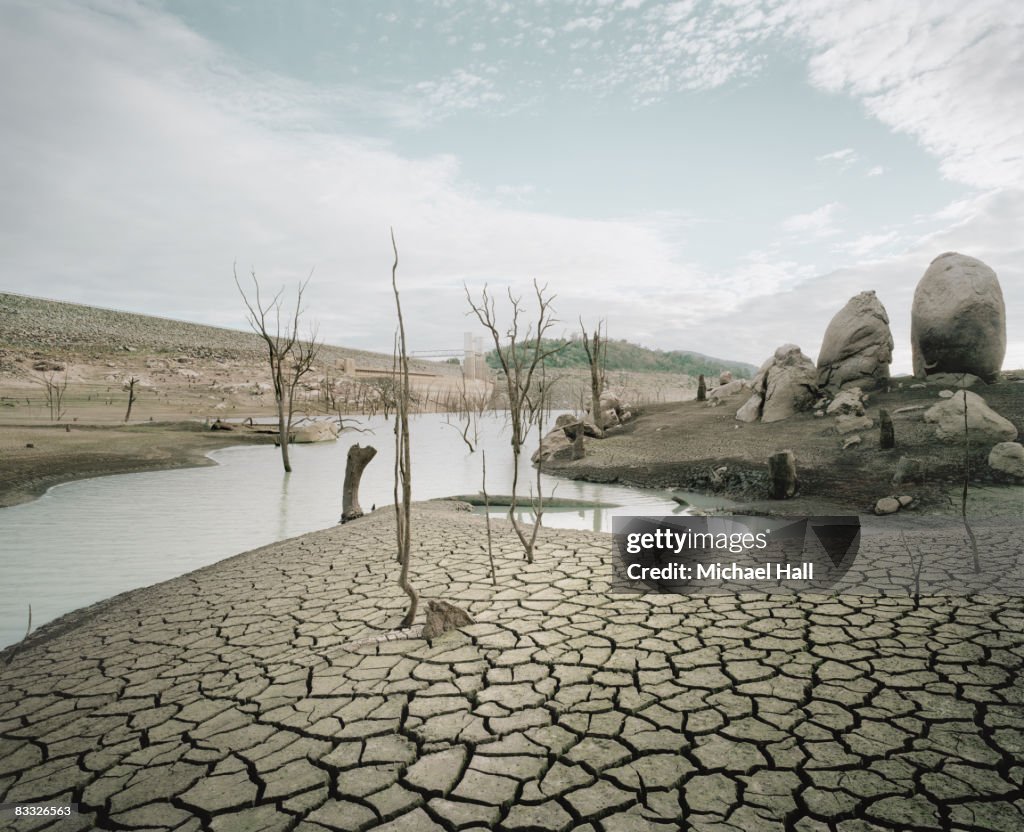
Effective Climate change over the last three decades has continued to accelerate. Weather-related disasters now occur at triple the rate they once did. The impacts are especially severe for populations in developing nations, as they often lose not only their belongings but also face a deterioration in their access to food.
Effective Climate change is no longer a distant threat—it is already happening. Experts predict that 2015 will mark the hottest year ever recorded, and this trend is only beginning. Using advanced climate models, scientists can already forecast the impacts of global warming. The current average global temperature increase of 0.8°C is projected to climb by 4°C or more by the year 2100—bringing potentially devastating consequences. To put that in perspective, this shift is roughly the same as the temperature difference between the last ice age and the present day.
The ongoing climate shift is driven by the human-induced greenhouse effect. Despite various initiatives aimed at reducing emissions, CO₂ output continues to rise. As greenhouse gases accumulate, Earth retains more heat, which in turn increases water vapour levels in the atmosphere. This triggers further impacts: heavier rainfall and more intense extreme weather events.
Read more about the Importance of Parenting
Read more about Modern Climate
However, this Effective Climate change varies greatly by region. Increased rainfall is expected mainly in higher latitudes and some tropical zones, while the subtropics are likely to experience greater dryness. This widening gap between wet and arid regions pushes ecosystems out of balance, disrupting the planet’s natural systems.
Since 1950, these Effective Climate change have been recorded and are becoming increasingly common. If the impacts of climate change continue to intensify, the consequences will be severe. They will affect people worldwide, but the poorest nations will suffer the most. Both our way of life and that of people in less developed countries will be transformed.
Heatwaves, storms, droughts, and wildfires: In May 2015, India experienced a ten-day heatwave with temperatures reaching 45°C, leading to the deaths of over 2,200 people. Climate-related disasters such as cyclones, hurricanes, and violent storms take lives and cause devastating damage. In 2012, Hurricane Sandy pushed a tidal surge of 2.7 meters into central New York; torrential rains destroyed crops in Haiti and Cuba, wiping out thousands of hectares of farmland. Scientists are warning of the possibility of an exceptionally strong El Niño this year.
Plant life and food production: Reduced harvests caused by drought and pest outbreaks lead to food shortages and rising prices. In the future, growing regions for crops like maize, potatoes, rice, and wheat will shift, and the nutritional content of these foods may decline.
Oceans and marine ecosystems: Increased rainfall and melting polar ice alter the salinity of the oceans. Greater carbon dioxide levels are making the seas more acidic, causing coral reefs and many marine species to die. Freshwater sources—and therefore our drinking water—are also at risk. Coastal regions will face more frequent storm surges, requiring stronger defenses, while island nations will continue to lose land to the rising seas.
In several regions of Asia and Africa, droughts have already become more frequent and severe over recent decades. The main reasons why poorer nations are highly vulnerable to the impacts of climate change lie in their geographical position, as well as their high exposure and limited capacity to adapt. Between 1970 and 2008, 90 percent of all people who lost their lives due to extreme weather events lived in developing nations. Compared to wealthier countries, they are far more exposed to unusual weather patterns, often lacking adequate protection, and even when rescue operations occur, they are typically slow.
Many developing nations rely heavily on agriculture. Shifts in climate directly affect the availability of natural resources, reduce agricultural yields, and influence the quality of food.
Adjusting to Effective Climate change and its impacts is a major challenge, especially for people in developing nations who are scarcely equipped to cope. Even if the rise in global temperature stays below two degrees, it will still lead to the loss of farmland and coastal communities. Should temperatures climb by 4°C by the year 2100, the resulting damage will increase dramatically. Critical “tipping points” in Earth’s systems—such as the melting of polar ice sheets or the decline of the northern Amazon rainforest—could be pushed into irreversible change. The living conditions of populations in poorer regions will deteriorate significantly.
Alongside the climate-friendly steps individuals can take, Welthungerhilfe engages in projects that promote sustainable farming practices, support communities already experiencing climate impacts, and advocate for international climate action. The moment to act is now—boldly and without delay.
Effective Climate change is playing a direct role in driving humanitarian crises such as heatwaves, wildfires, floods, tropical cyclones, and hurricanes, with these events growing in scale, frequency, and severity.
Studies indicate that 3.6 billion people already reside in regions highly vulnerable to the impacts of climate change. From 2030 to 2050, it is projected that climate change will be responsible for roughly 250,000 extra deaths annually, stemming from undernutrition, malaria, diarrheal diseases, and heat-related illnesses alone.
The projected direct health-related damage costs (excluding those in health-related sectors such as agriculture, water, and sanitation) are estimated at between US$ 2 and 4 billion each year by 2030.
Nations with fragile health systems—primarily in developing regions—will face the greatest challenges in coping unless they receive support for preparation and response.
Lowering greenhouse gas emissions through improved transportation, dietary, and energy-use practices can deliver significant health benefits, particularly by cutting air pollution.
Key Facts
Effective Climate change is actively driving humanitarian crises, including heatwaves, wildfires, floods, tropical storms, and hurricanes, all of which are growing in size, frequency, and severity.
Studies indicate that 3.6 billion people already inhabit regions highly vulnerable to the effects of climate change. From 2030 to 2050, it is projected to cause roughly 250,000 additional deaths each year due to undernutrition, malaria, diarrheal diseases, and heat stress alone.
Direct health-related damages (excluding losses in sectors like agriculture, water, and sanitation) are expected to cost between US$ 2–4 billion annually by 2030.
Countries with fragile health systems—predominantly in the developing world—will face the greatest challenges in coping without external aid to prepare and respond effectively.
Cutting greenhouse gas emissions by improving transportation, food systems, and energy use can bring substantial health benefits, particularly by reducing air pollution.
Overview
Climate change poses a profound danger to human health, impacting the physical environment and influencing every facet of natural and human systems—social structures, economies, and healthcare delivery alike. It acts as a force multiplier, eroding progress in health outcomes achieved over decades. As climate patterns shift, we are seeing more frequent and intense weather events, such as storms, extreme heat, floods, droughts, and wildfires. These hazards directly and indirectly affect health, increasing mortality, fueling noncommunicable diseases, facilitating the spread of infectious illnesses, and triggering health crises.
The consequences extend to the health workforce and infrastructure, reducing the ability to deliver universal health coverage (UHC). Moreover, ongoing climate pressures—including shifting temperatures and rainfall, water shortages, flooding, and rising sea levels—are degrading the environmental and social conditions essential for physical and mental well-being. Clean air, safe water, fertile soil, food security, and livelihoods are all under threat. Delaying decisive action will heighten health dangers, undo decades of global health progress, and violate the shared responsibility to uphold the human right to health for everyone.
The Intergovernmental Panel on Climate Change’s (IPCC) Sixth Assessment Report (AR6) found that the dangers posed by climate change are emerging more quickly and will intensify sooner than previously anticipated, making adaptation increasingly difficult as global temperatures rise.
It also highlights that 3.6 billion people are already living in regions highly vulnerable to climate impacts. Even though low-income nations and small island developing states (SIDS) contribute very little to global greenhouse gas emissions, they experience the most severe health consequences. In high-risk areas, the mortality rate from extreme weather over the past decade was 15 times higher than in more resilient regions.
Climate change is affecting health in numerous ways — causing death and illness from more frequent extreme weather events such as heatwaves, storms, and floods; disrupting food production systems; increasing the spread of zoonotic, food-, water-, and vector-borne diseases; and exacerbating mental health challenges. Moreover, it is eroding many key social determinants of health, including employment, equity, access to healthcare, and social safety networks. These climate-related health threats are felt most acutely by the most vulnerable and disadvantaged groups, such as women, children, ethnic minorities, impoverished communities, migrants or displaced people, older adults, and individuals with pre-existing medical conditions.
While it is undeniable that climate change impacts human health, accurately quantifying the extent and magnitude of many climate-sensitive health hazards remains difficult. Nonetheless, ongoing scientific progress is enabling researchers to better attribute increases in illness and death to global warming and to more precisely assess the risks and scale of these threats.
According to WHO figures, 2 billion individuals do not have access to safe drinking water, and 600 million suffer from foodborne diseases each year, with children under the age of 5 accounting for 30% of related fatalities. Climate-related stress factors increase the likelihood of waterborne and foodborne illnesses. In 2020, 770 million people faced hunger, with the majority residing in Africa and Asia. Climate change disrupts the availability, quality, and variety of food, intensifying food and nutrition emergencies.
Shifts in temperature and rainfall patterns facilitate the spread of vector-borne diseases. Without intervention, the annual death toll from such illnesses—currently over 700 000—could rise. Climate change also triggers acute mental health problems, such as anxiety and post-traumatic stress, and contributes to long-term psychological disorders due to factors like forced displacement and weakened community ties.
Recent studies suggest that 37% of heat-related deaths can be linked to human-driven climate change. Among individuals over 65, heat-related mortality has risen by 70% over the last two decades. In 2020, an additional 98 million people experienced food insecurity compared with the 1981–2010 baseline. WHO conservatively estimates that by the 2030s, climate change could cause 250 000 extra deaths annually due to conditions such as malaria and coastal flooding. However, modelling limitations remain, particularly when accounting for risks like drought and migration pressures.
The climate emergency threatens to reverse five decades of progress in development, public health, and poverty reduction, while deepening existing health inequalities within and between nations. It significantly undermines the achievement of universal health coverage (UHC) by adding to the existing disease burden and worsening barriers to accessing care—often at the very moments when such care is most urgently needed. Around 930 million people—roughly 12% of the global population—spend at least 10% of their household income on healthcare. With the poorest populations often lacking insurance, health-related crises already drive about 100 million people into poverty each year, and climate change is expected to intensify this pattern.






